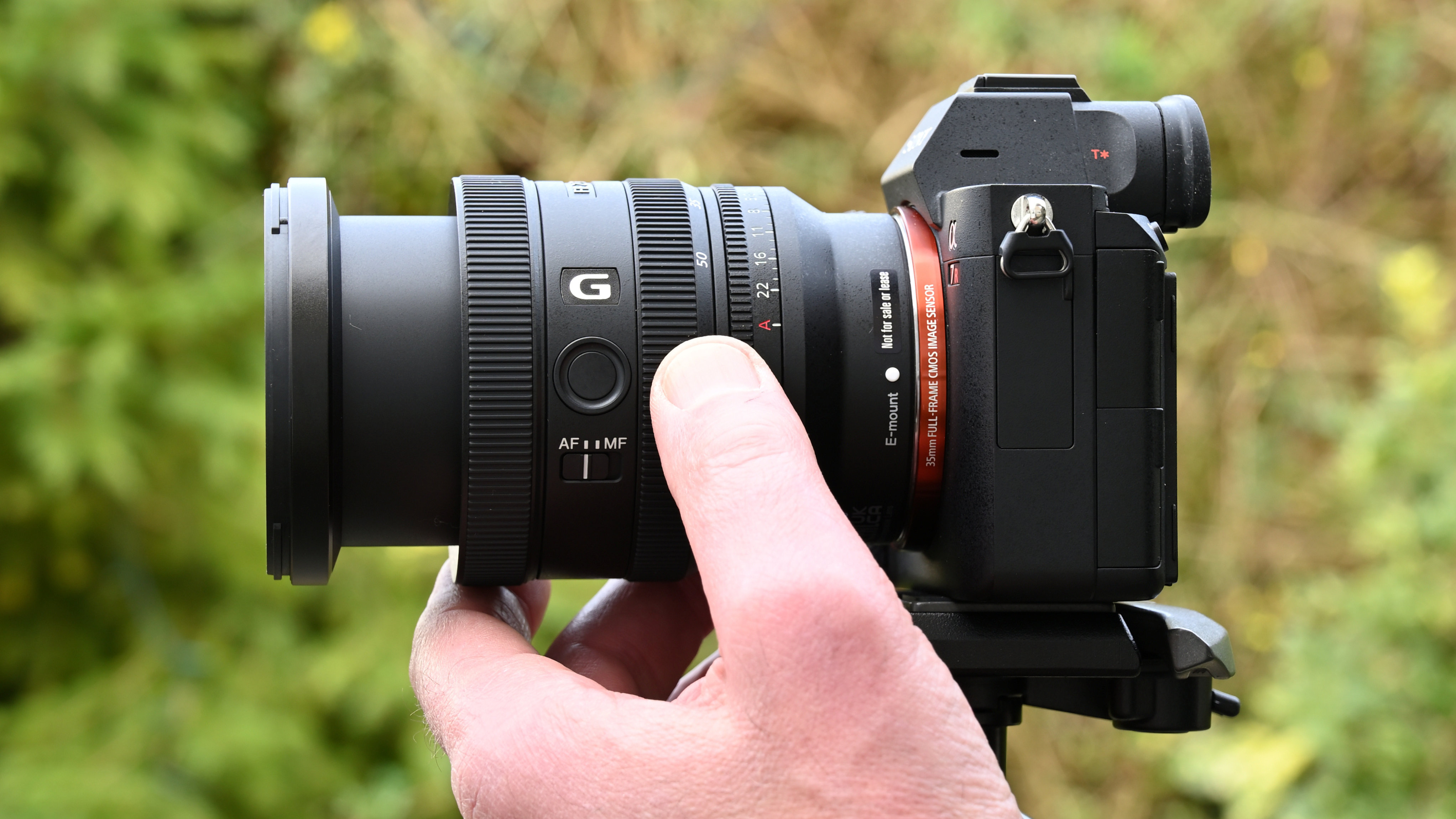
Sony has been going about its full-frame mirrorless business for more than ten years now and has racked up 73 E-mount lenses along the way. New for 2024, the FE 24-50mm F2.8 G standard zoom and simultaneously released FE 16-25mm F2.8 G wide-angle zoom aim to be the most compact and lightweight options, in the class of full-frame compatible constant-aperture f/2.8 zooms.
So-called ‘trinity’ wide-angle, standard and telephoto zooms with a constant f/2.8 aperture are highly popular the world over, but I find they’re often bulky, heavy lenses that can feel a bit cumbersome. I often prefer zoom lenses with slower f/4 aperture, especially for shooting with slinky mirrorless cameras rather than chunky DSLRs, as they’re generally more compact and lightweight, as well as being cheaper to buy. The downside is that they’re less ideal for freezing motion under dull lighting conditions and can’t deliver such a tight depth of field when I want it.
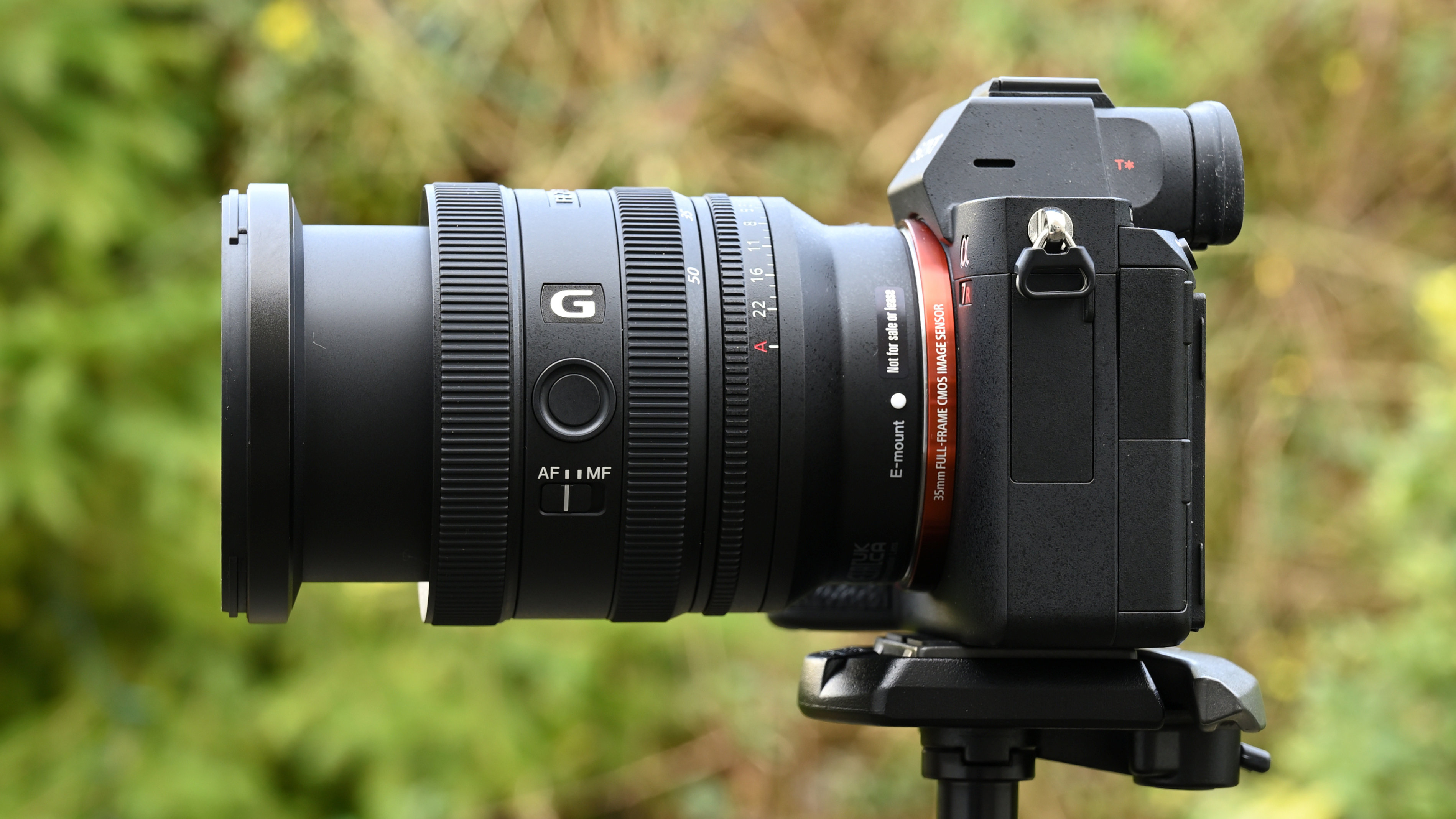
Sony FE 24-50mm F2.8 G: What's changed?
The FE 24-50mm F2.8 G is refreshingly lightweight but comes with a compromise in outright zoom range. It certainly has plenty of wide-angle potential, matching the more usual 24-70mm f/2.8 zooms, but can’t stretch to anything beyond a standard focal length, which makes it less versatile. I find the maximum focal length can feel limiting, not just for portraiture and still life photography, but also in plenty of other more general shooting scenarios.
Sony FE 24-50mm F2.8 G: Specifications
Sony FE 24-50mm F2.8 G: Price & Availability
The FE 24-50mm F2.8 G certainly isn’t the first standard zoom to sacrifice zoom range in pursuit of a compact, lightweight design. There’s the Canon RF 24-50mm F4.5-6.3 IS STM and the Sony FE 28-60mm F4-5.6 to name but two. But both of these lenses have a narrower, variable aperture rating. While the new lens weighs 440g, the full-size Sony FE 24-70mm F2.8 GM II weighs in at 695g and costs around twice as much to buy. The Sigma 24-70mm f/2.8 AF DG DN Art is even heavier at 835g but costs around the same as the lightweight FE 24-50mm.
Other constant-aperture f/2.8 choices include the Tamron 28-75mm f/2.8 Di III RXD G2 which has a modest weight of 540g and the Tamron 20-40mm F2.8 Di III VXD, which is even lighter at just 365g. The latter is more wide-angle oriented but both of these lenses undercut the FE 24-50mm on price. For further comparison, the simultaneously released Sony FE 16-25mm F2.8 G is also a little lighter, at 409g.
Sony FE 24-50mm F2.8 G: Design & Handling
For me, the big thing about this lens’s design is its smallness. It’s not just the relatively limited zoom range that helps squeeze the dimensions to 75x92mm, along with a relatively small filter thread of 67mm. The lens also has an extending inner barrel, so while it’s very compact at the 50mm mark, there’s noticeable physical extension as you zoom out towards the 24mm wide-angle setting. Another downsizing contributor is the inclusion of four aspherical elements, which also helps to reduce optical aberrations. There are also two ED (Extra-low Dispersion) elements to enhance clarity and minimize chromatic aberration.
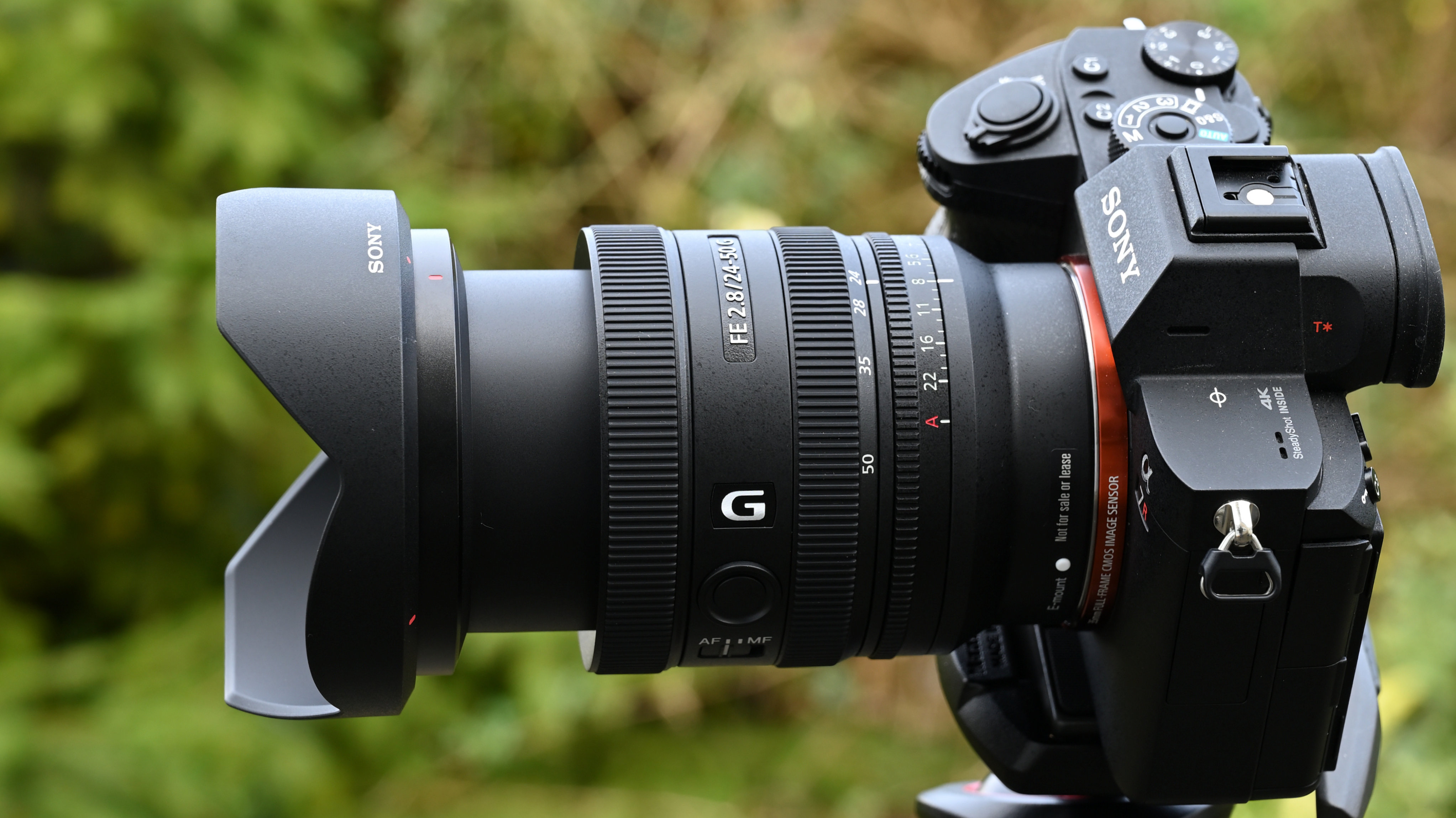
Everybody likes sharp lenses but, for f/2.8 zooms and faster primes, I feel that the quality of bokeh is also an important factor. This lens delivers a fairly tight depth of field, especially for close-ups, and the minimum focus distance becomes even shorter if you’re willing to switch from autofocus to manual focus mode. The quality of bokeh when stopping down a little is helped by a very well-rounded 11-blade aperture diaphragm.
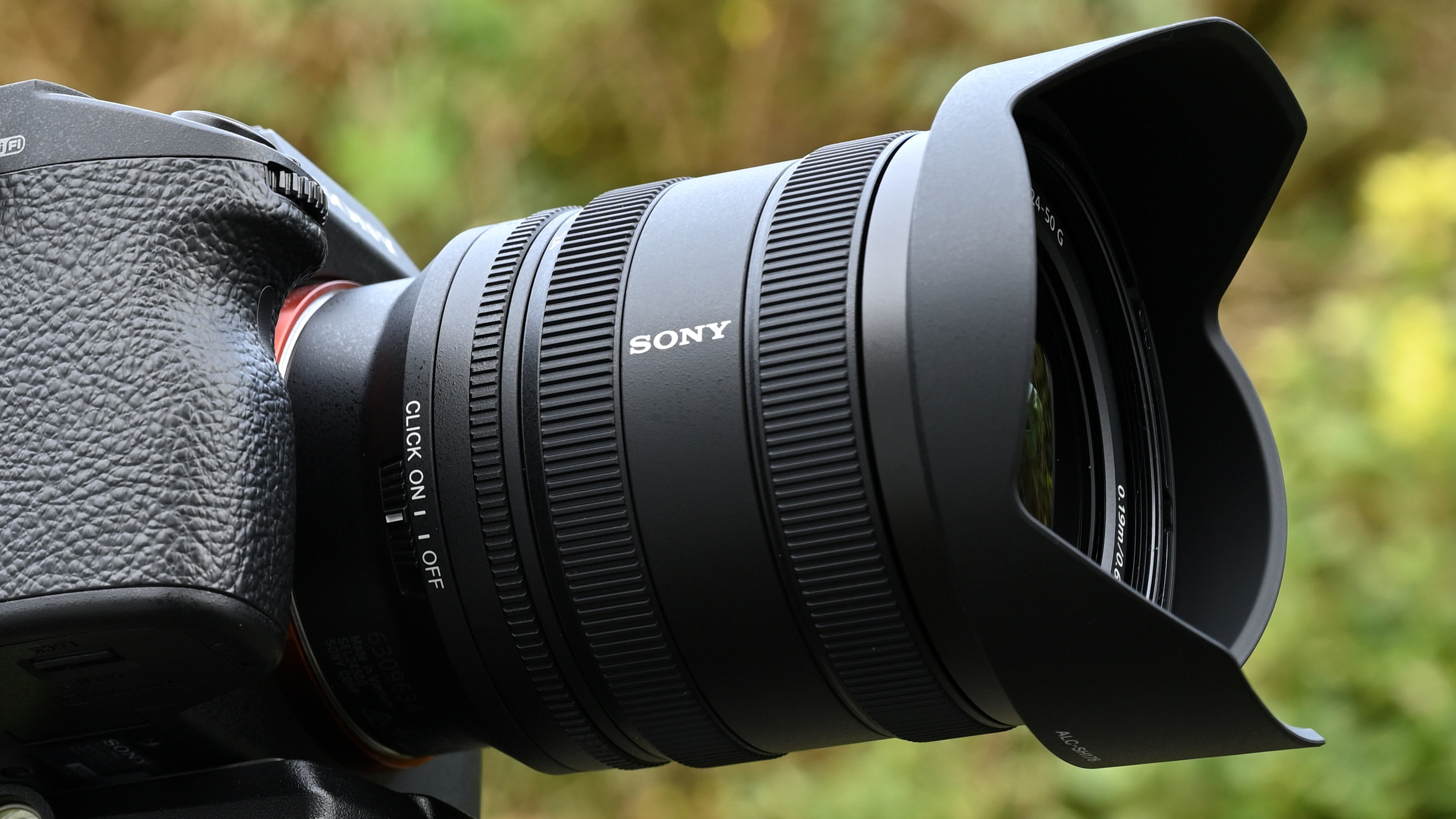
For a small lens, I’m impressed that it goes large in terms of handling prowess. Useful features include an aperture control ring, complete with a click/de-click switch, which makes it eminently suitable for both stills and video.
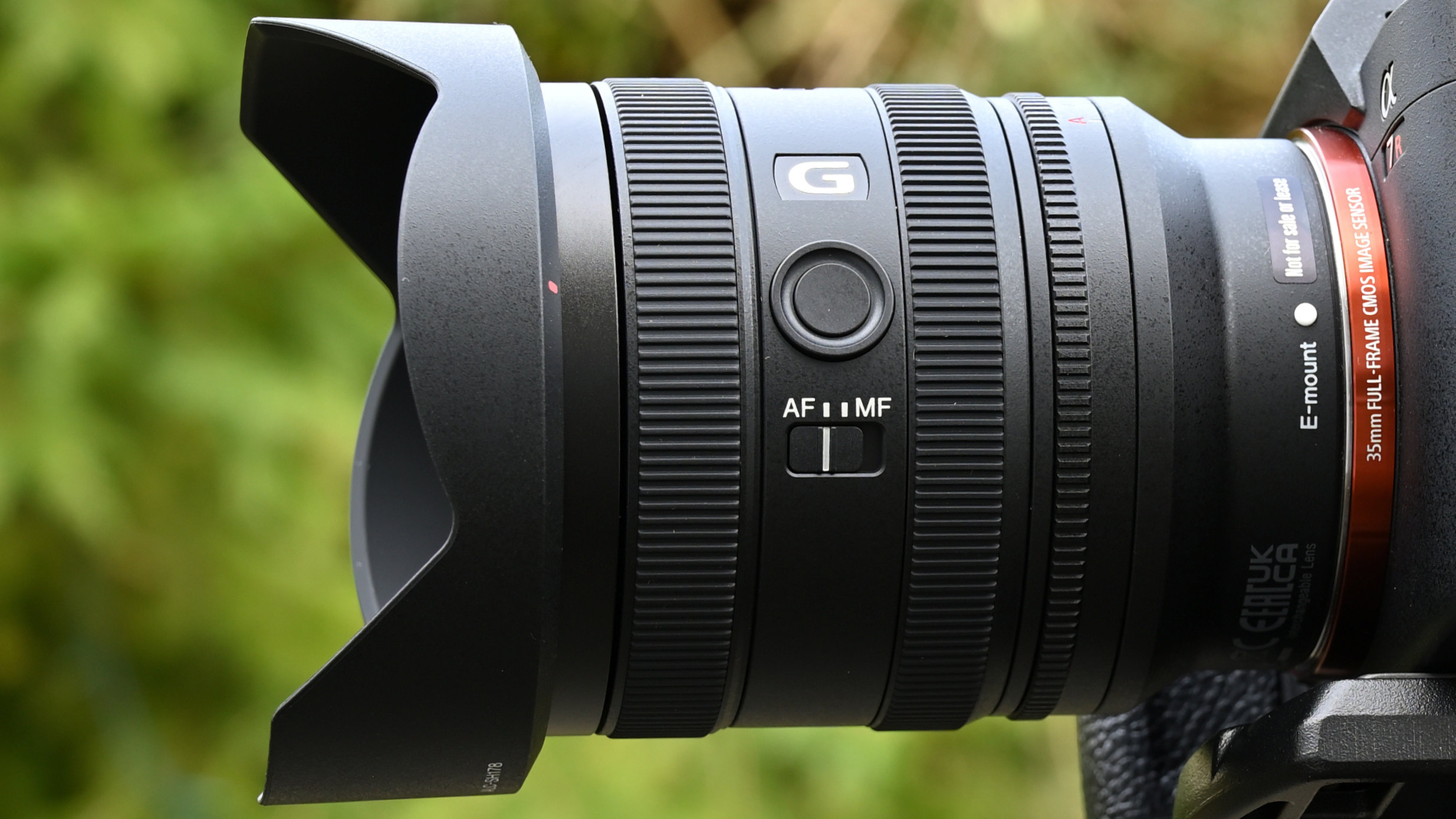
I like the AF-hold button, which can be customized for other functions via camera menus. I’m also pleased to see an extensive set of weather-seals, so rain needn’t stop play, and there’s a keep-clean fluorine coating on the front element. The overall build quality feels tough and solid, despite the lightweight construction.
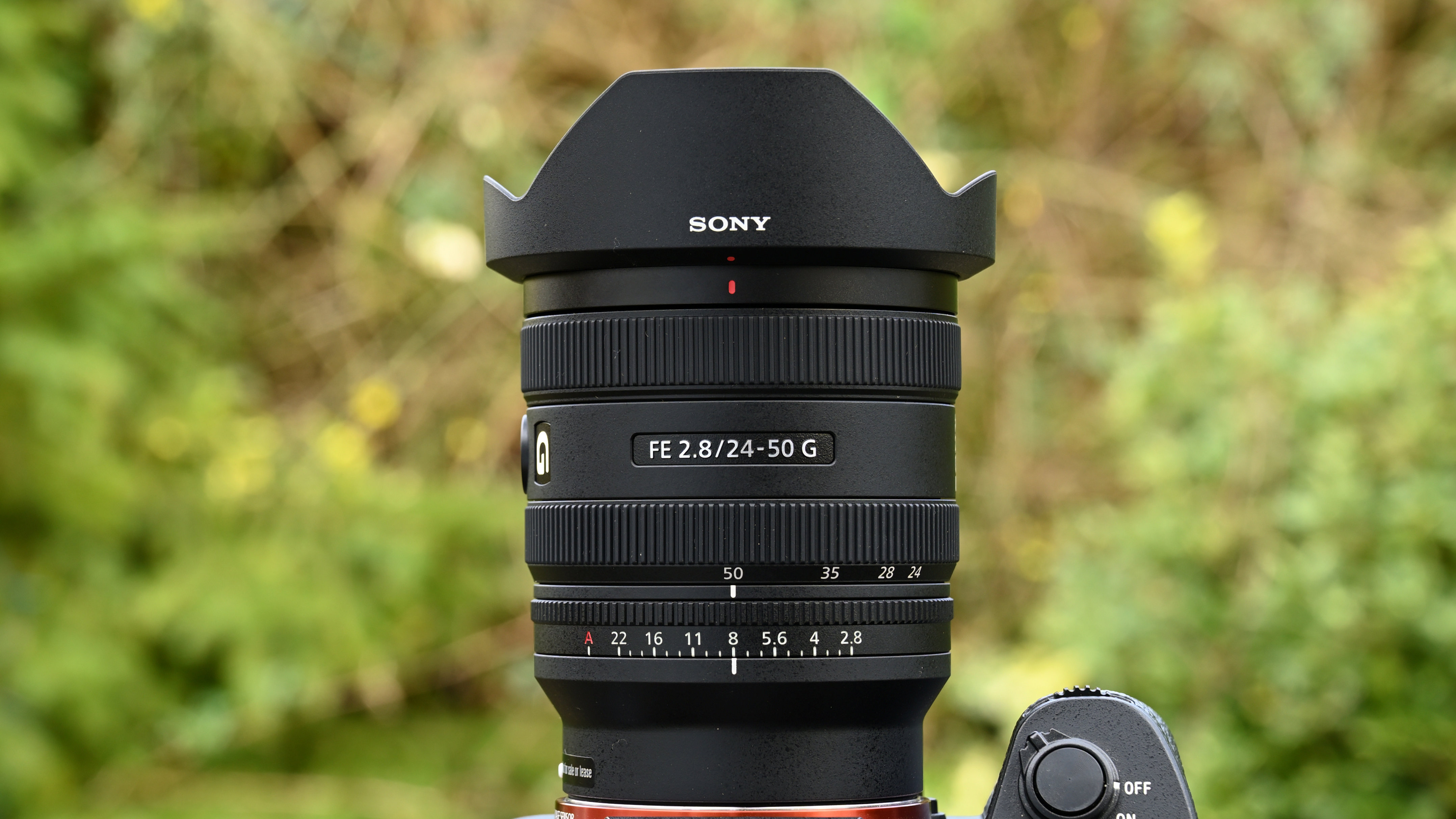
Sony FE 24-50mm F2.8 G: Photo Performance
Autofocus is super-fast for stills and delivers smooth, virtually silent transitions for video. That’s nothing less than I’d expect from a focus system based on a linear stepping motor. In my real-world tests and during our lab-testing, autofocus proved consistently accurate. Only the middle group of elements moves during focusing, to the mechanics are fully internal and there’s no rotation nor extension of the front element. In terms of outright sharpness, the lens is really impressive throughout its entire zoom range, even shooting wide-open at f/2.8. Indeed, our lab-test results revealed very similar levels of sharpness to those of the much pricier Sony FE 24-70mm F2.8 GM II lens.
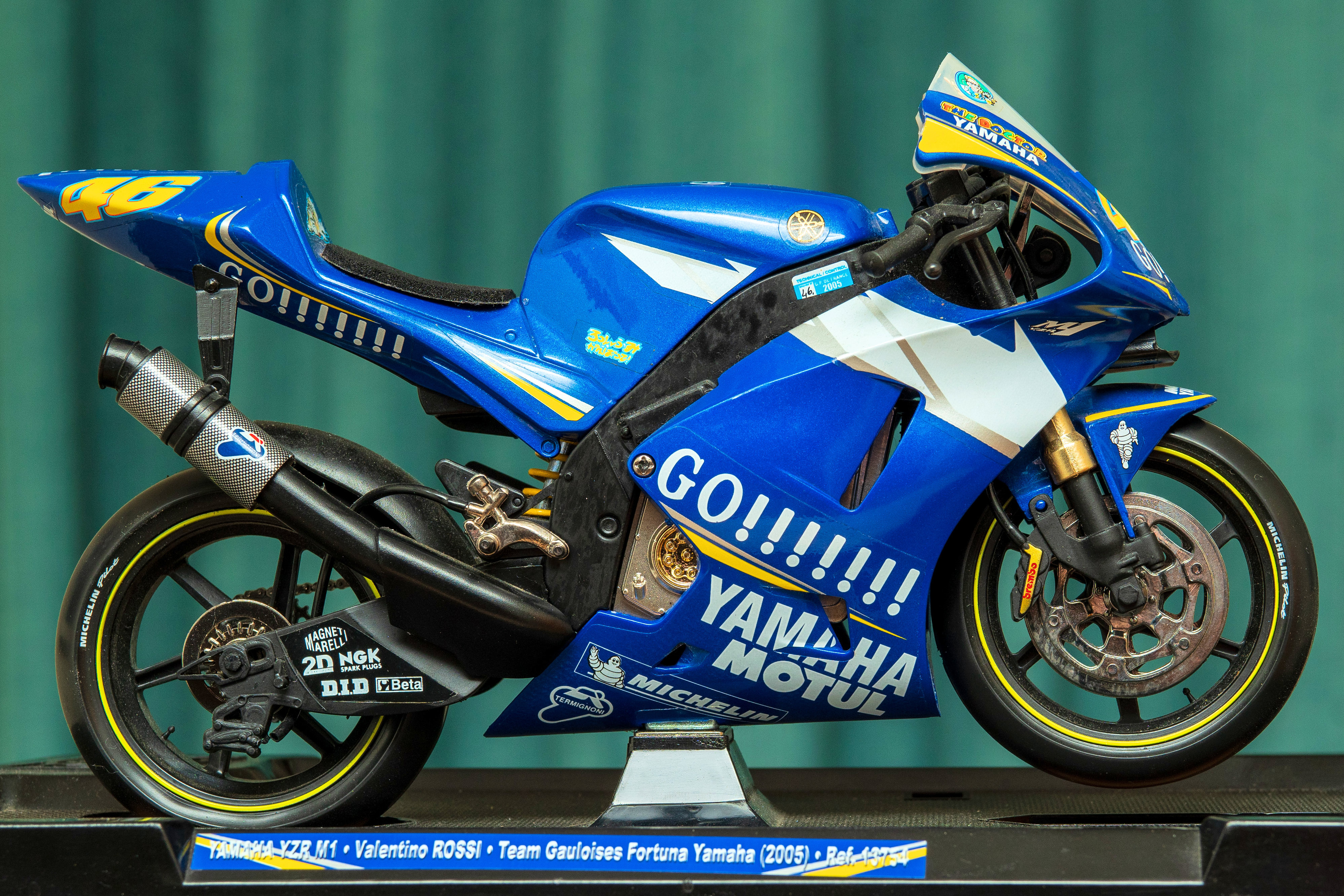
The quality of bokeh is nice and smooth and comes to the fore when shooting wide-open towards the long end of the zoom range. Axial chromatic aberration or ‘bokeh fringing’ is also well controlled, as shown in the following shot.
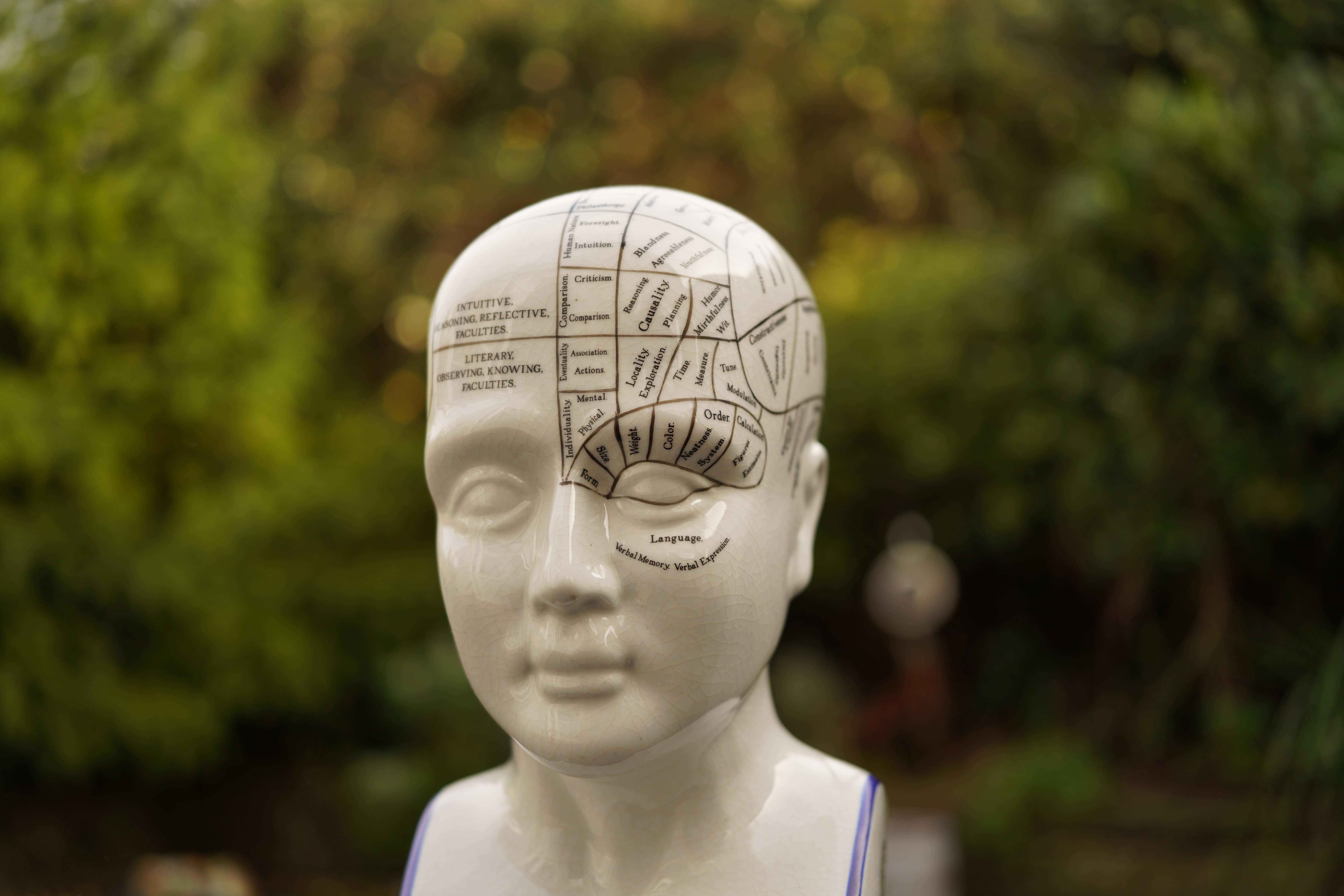
Lateral chromatic aberration is quite minimal at the short end of the zoom range but can be a little noticeable towards the long end, at least with automatic in-camera correction disabled. Distortion is a very different story. Optically, the lens produces so much barrel distortion in the 24-35mm sector of the zoom range that it’s all but unusable without automatic correction. Indeed, the in-camera correction for distortion can’t be switched off in the menu, nor when editing RAW files in Sony’s supporting Imaging Edge Desktop software. If you use a third-party app like Adobe Lightroom or Photoshop, a lens profile update should be along soon after the lens’s launch date. The following pair of wide-angle shots show the difference between automatic correction being applied, and processing RAW images with no correction.

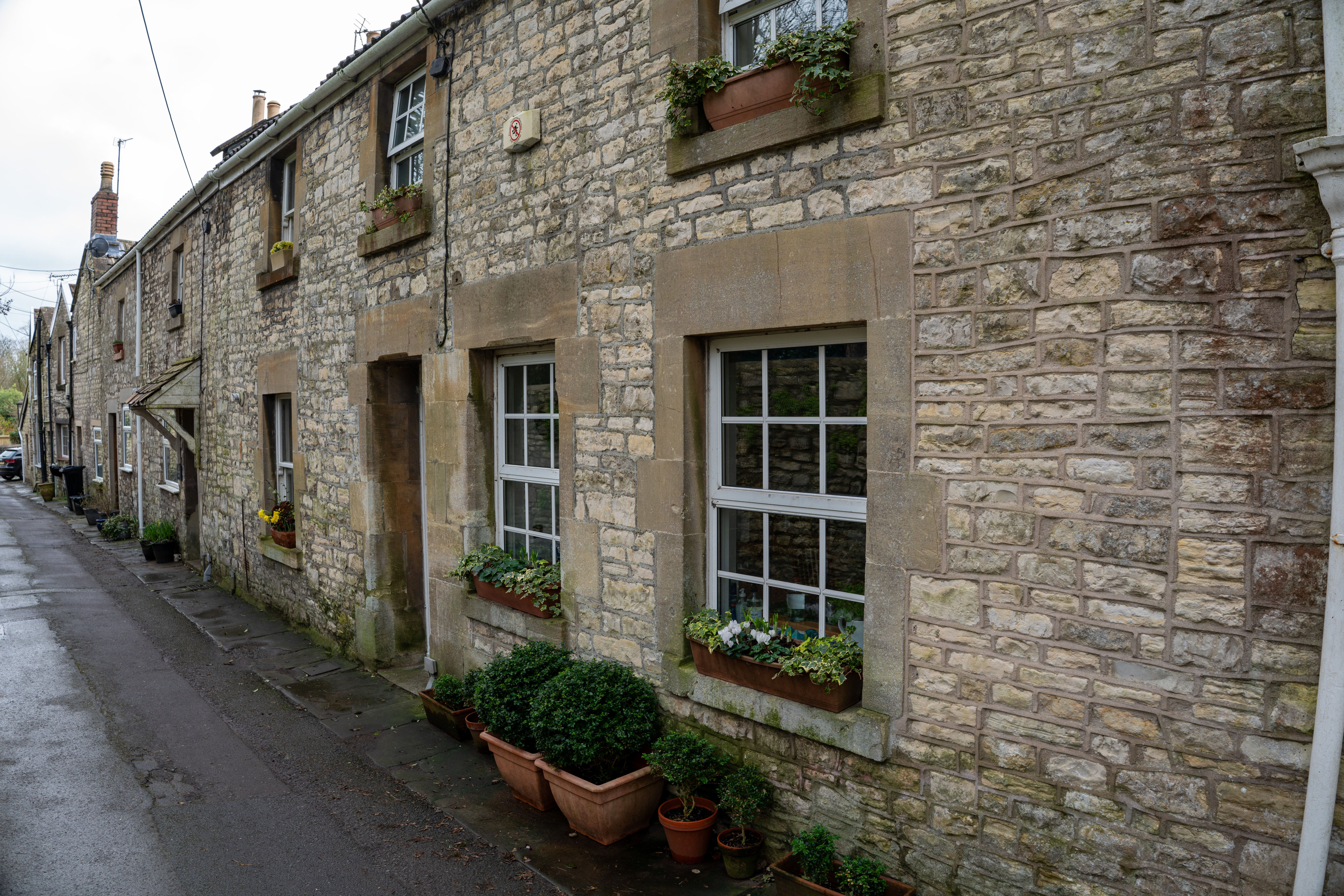


Sony FE 24-50mm F2.8 G: Sample Images
This set of test outdoor shots was taken under mixed lighting conditions, ranging from direct sunlight to cloud.

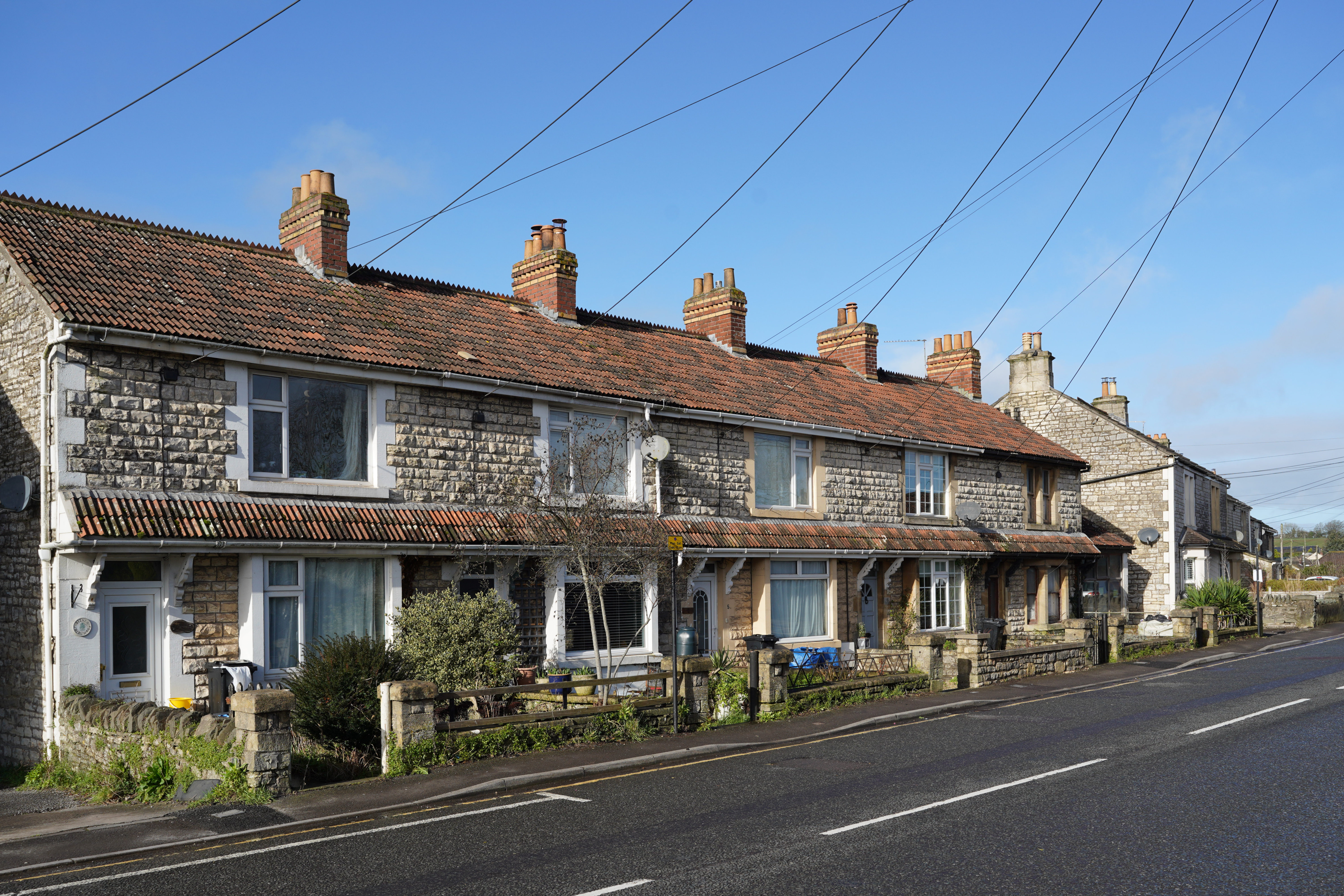





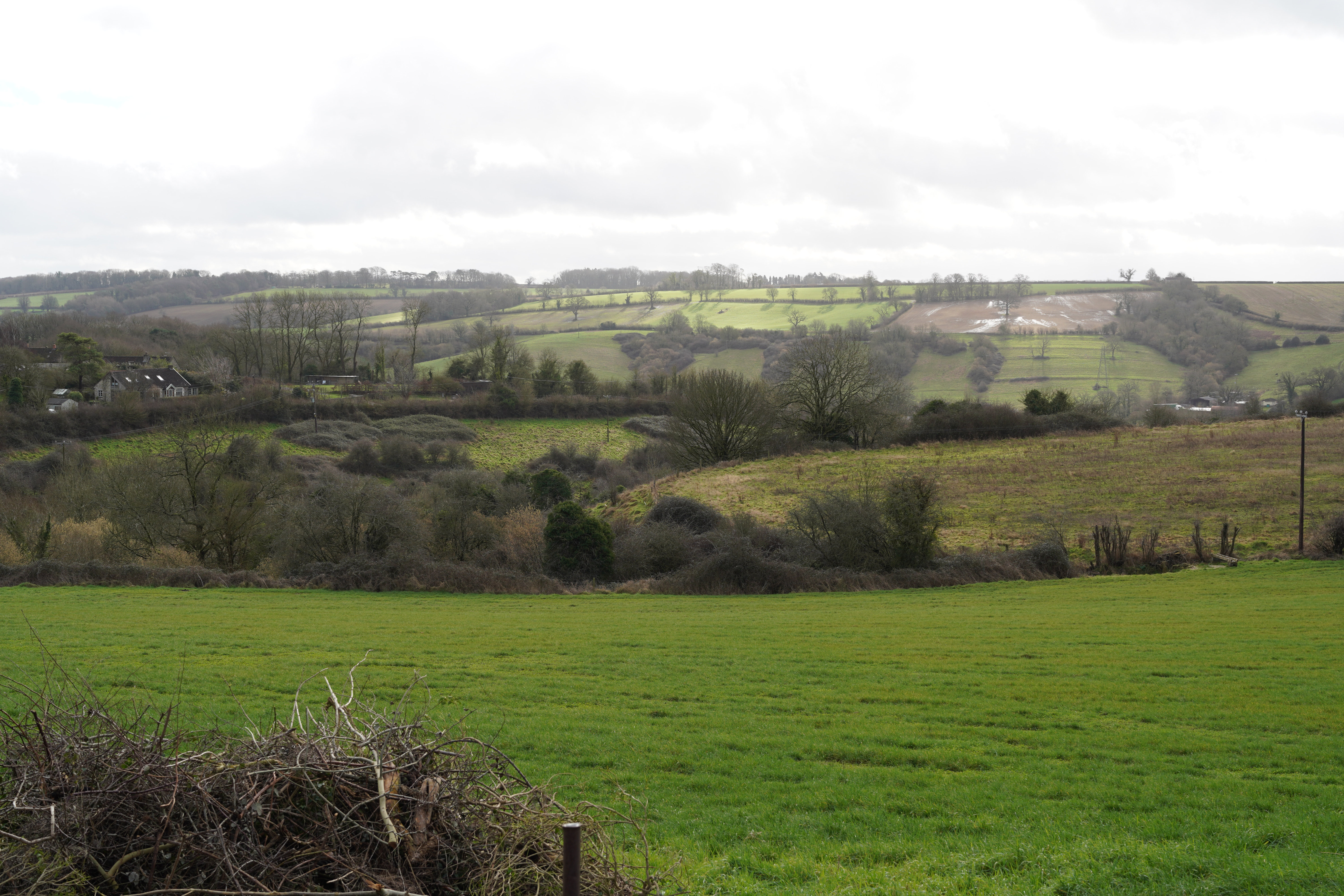


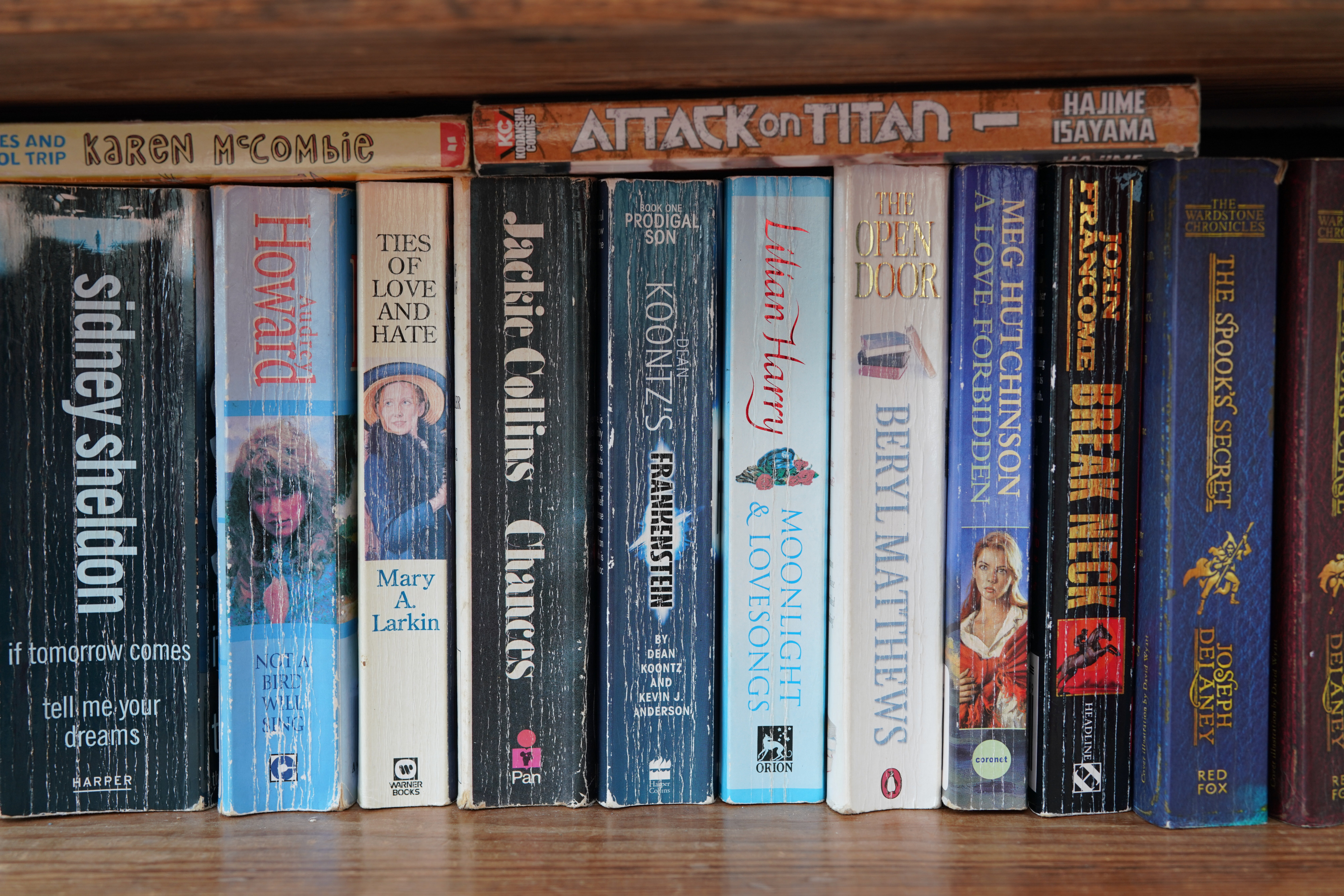





Sony FE 24-50mm F2.8 G: Lab Results
We run a range of lab tests under controlled conditions, using the Imatest Master testing suite. Photos of test charts are taken across the range of apertures and zooms (where available), then analyzed for sharpness, distortion and chromatic aberrations.
We use Imatest SFR (spatial frequency response) charts and analysis software to plot lens resolution at the center of the image frame, corners and mid-point distances, across the range of aperture settings and, with zoom lenses, at four different focal lengths. The tests also measure distortion and color fringing (chromatic aberration).
Sharpness:
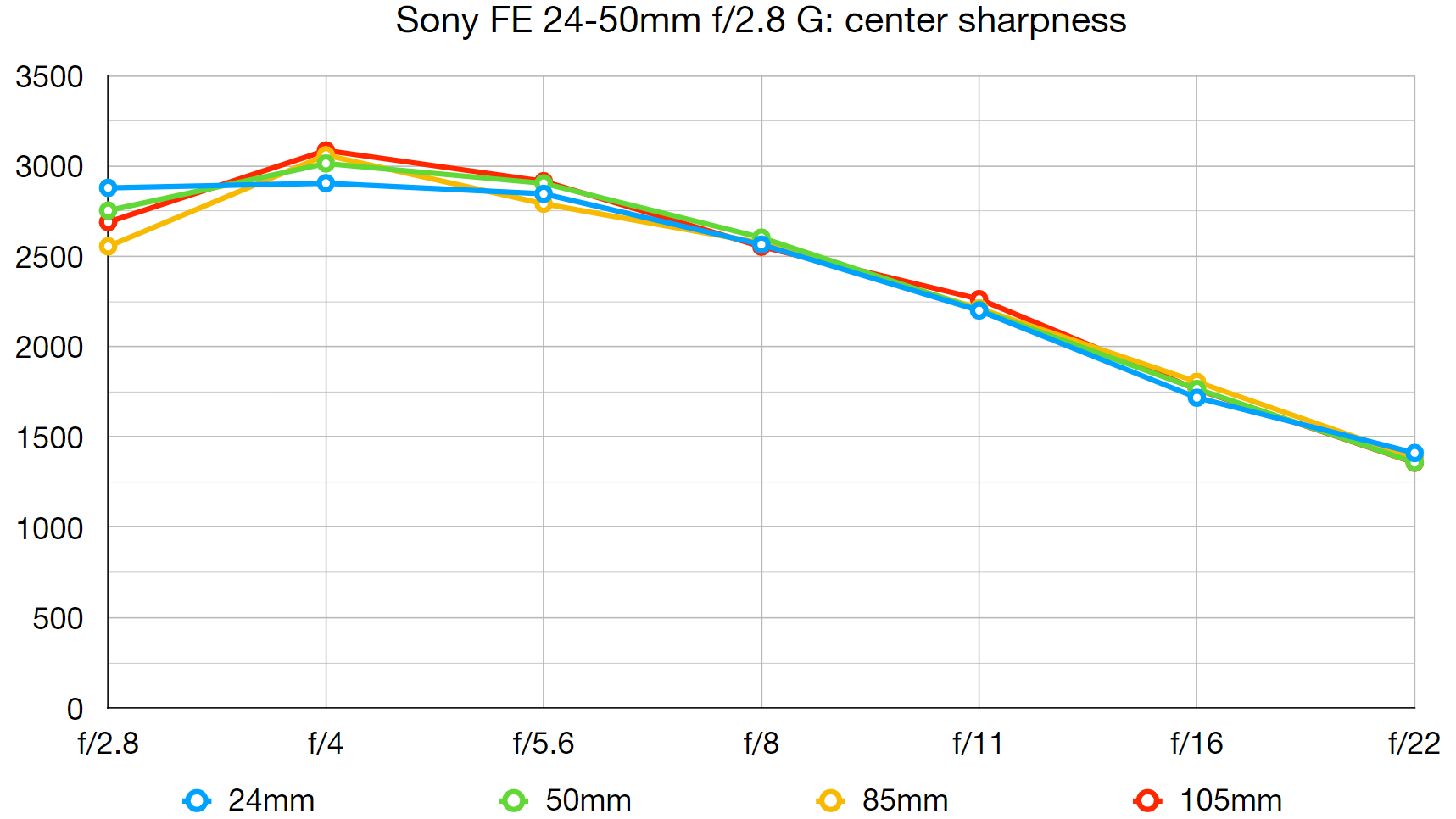
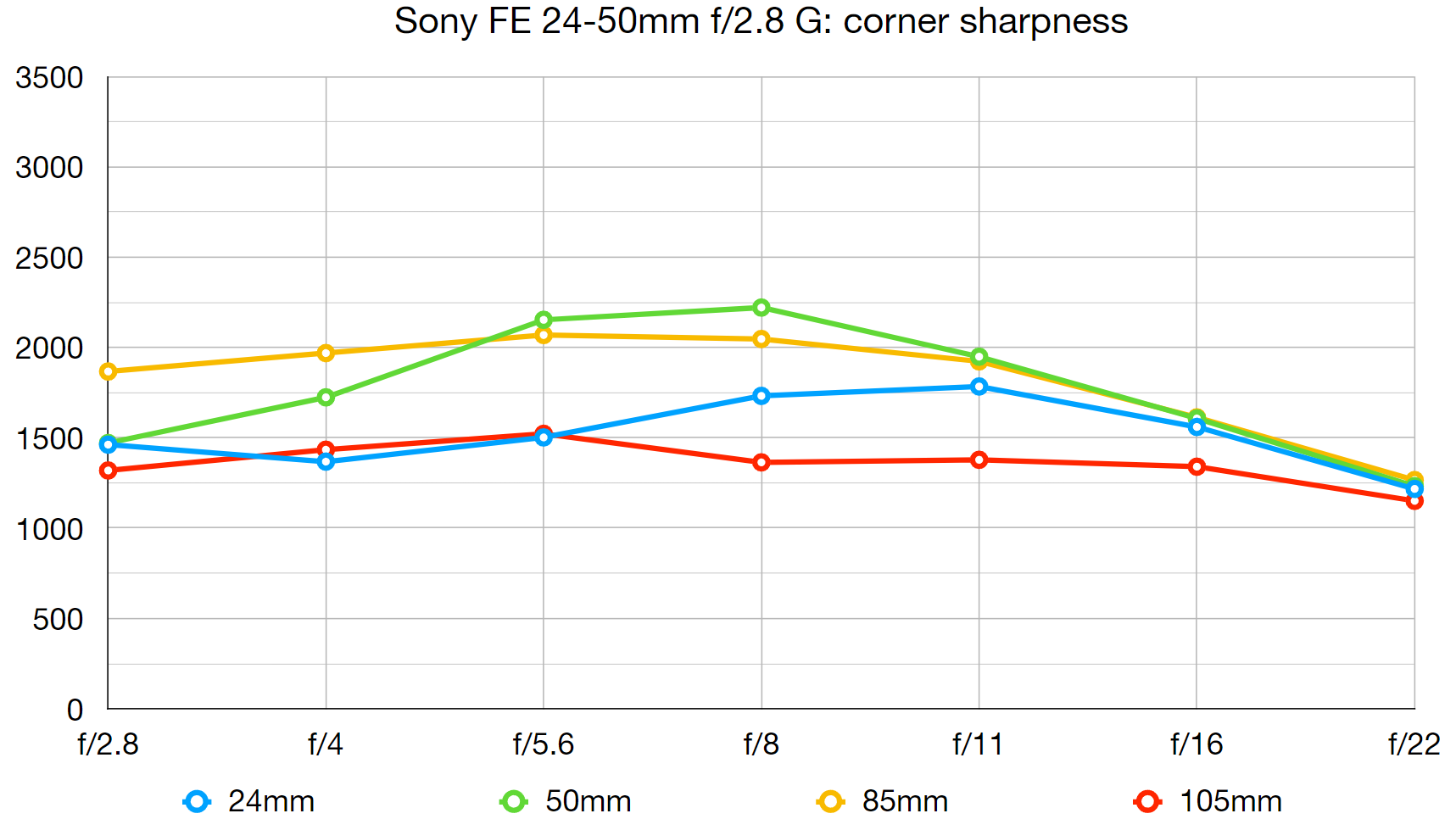
Throughout the albeit modest zoom range, levels of sharpness are absolutely excellent across most of the image frame, even when shooting wide-open at f/2.8, and hold up very well at the extreme edges and corners. There’s the typical drop-off at very narrow apertures, due to diffraction.
Fringing:
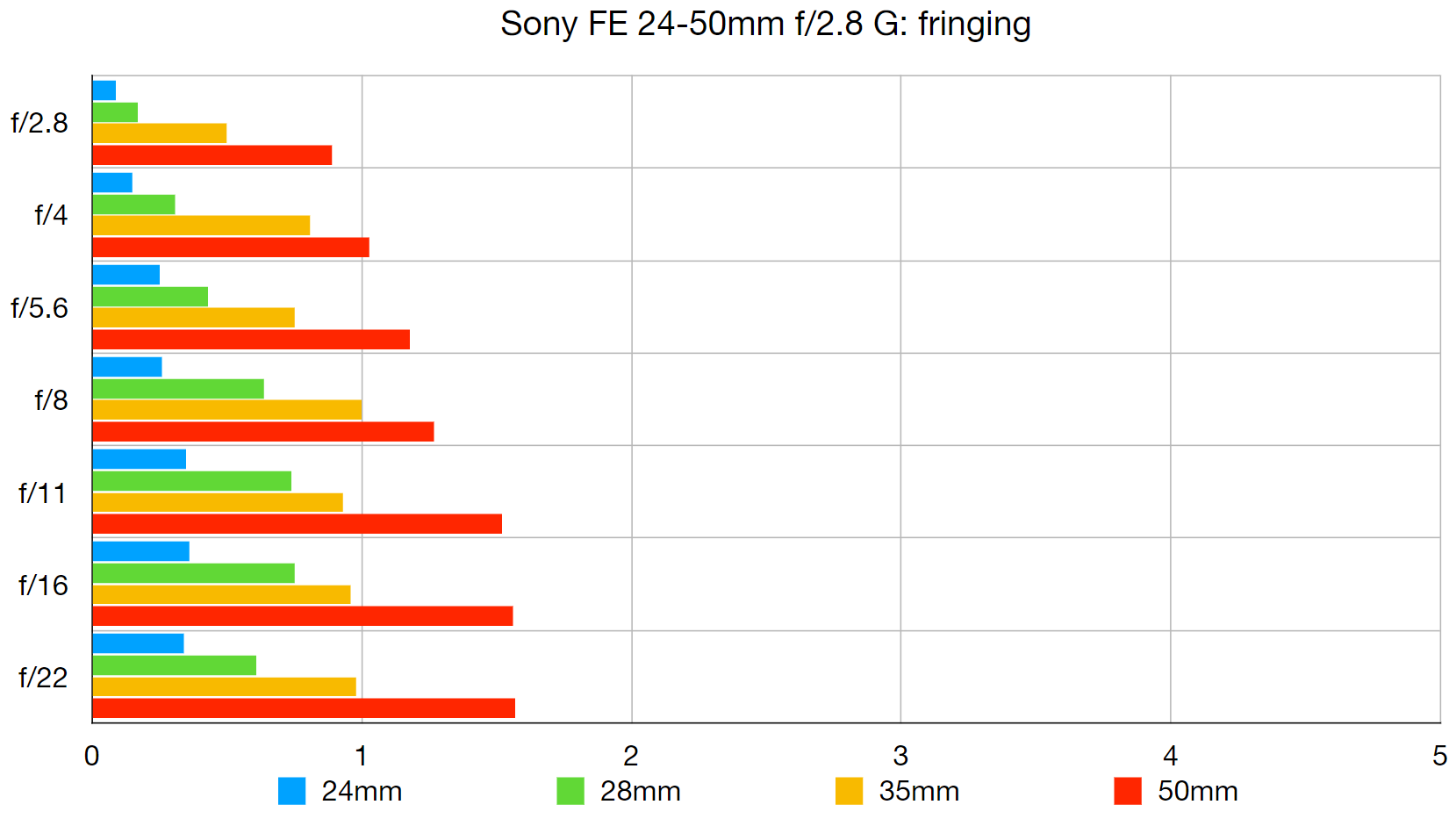
There’s fairly minimal lateral chromatic aberration in the 24-28mm sector of the zoom range, even at the edges and corners of the image frame, although it creeps up to noticeable levels towards the long end. Automatic in-camera correction is available.
Distortion:
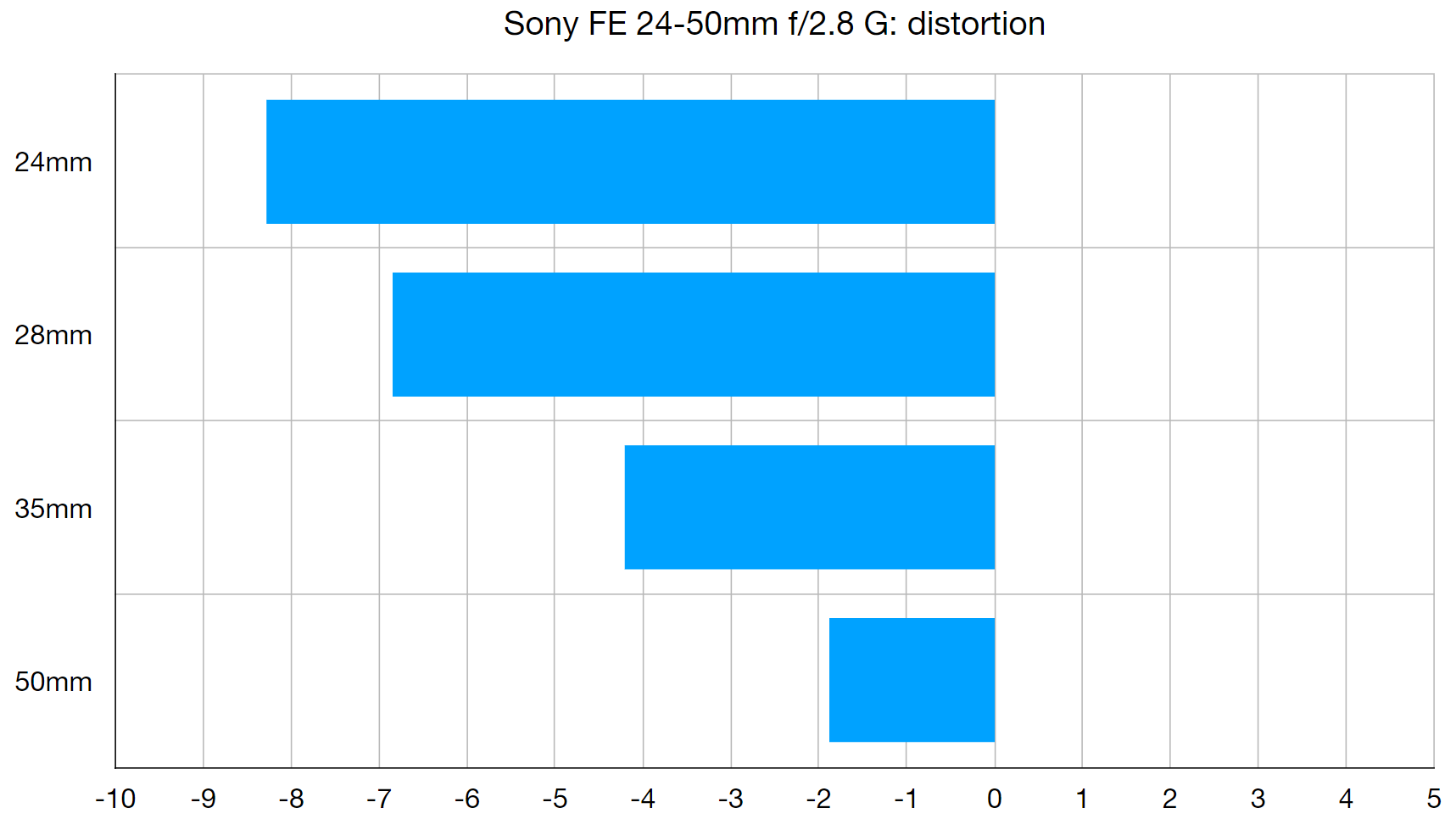
As with many recent designs of fairly compact lenses for mirrorless cameras, this one is all but unusable without automatic in-camera correction. As such, the correction can’t be switched off in the menus of compatible cameras. Although our lab tests reveal the extreme extent of barrel distortion when uncorrected, with the in-camera fix applied, there’s virtually no distortion to be seen in the images once in-camera correction does its job.
Sony FE 24-50mm F2.8 G: Verdict
For everyday shooting and walkabout photography, I often find that compactness and lightness of weight win out over zoom range. The Sony FE 24-50mm F2.8 G comes up trumps here. It’s small and weighs a mere 440g, making it exceptionally easy to live with for an f/2.8 constant-aperture standard zoom. I love the handling, with its click/de-click aperture ring and customizable AF-hold button, and the lens is well-built with a comprehensive set of weather-seals and a fluorine coating on the front element. The only think I miss is the stretch beyond a 50mm focal length but, if you’re more into standard and wide-angle photography, this comparatively little lens is a smart buy.

Should you buy the Sony FE 24-50mm F2.8 G?
✅ Buy this...
- Compact and lightweight
- Constant f/2.8 aperture
- Refined handling and build
🚫 Don't buy this...
- Relatively limited zoom range
- Needs auto-correction for distortion
- Pricier than Tamron alternatives







